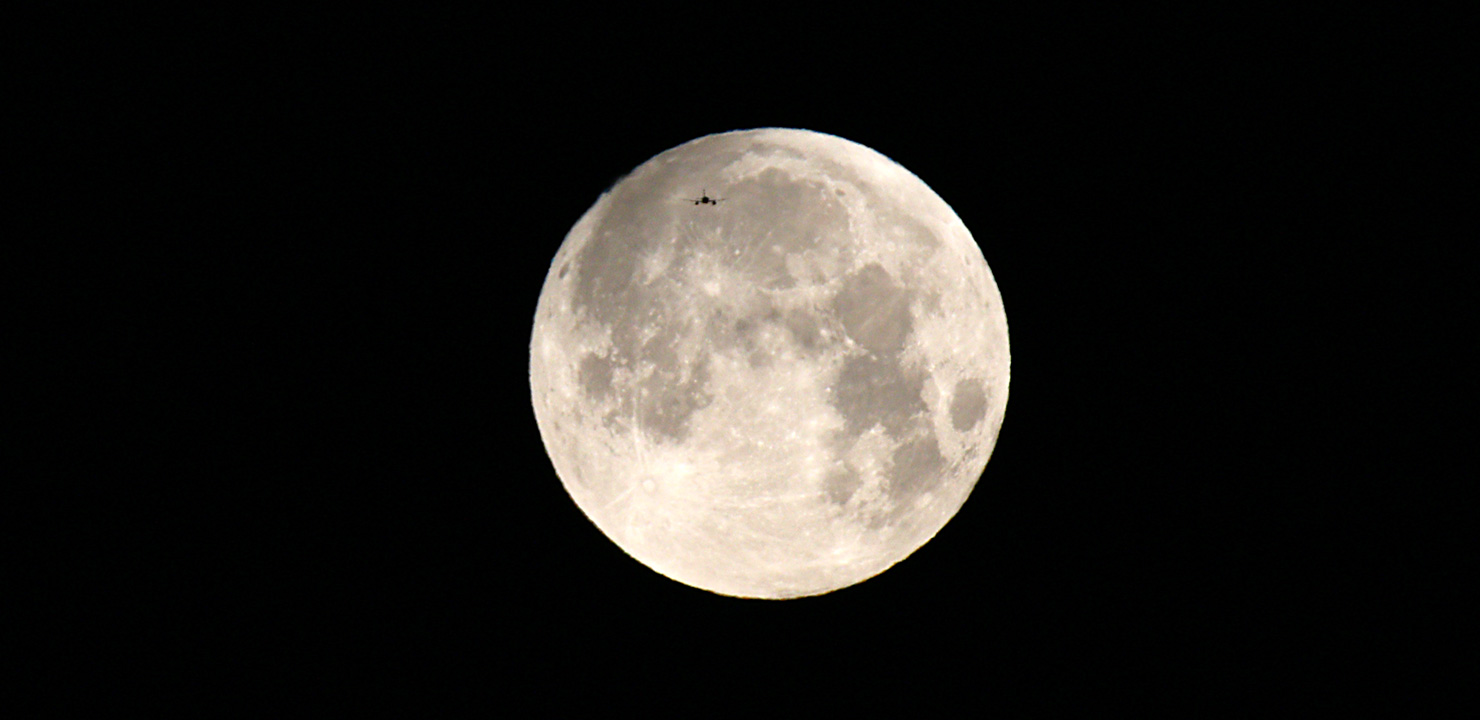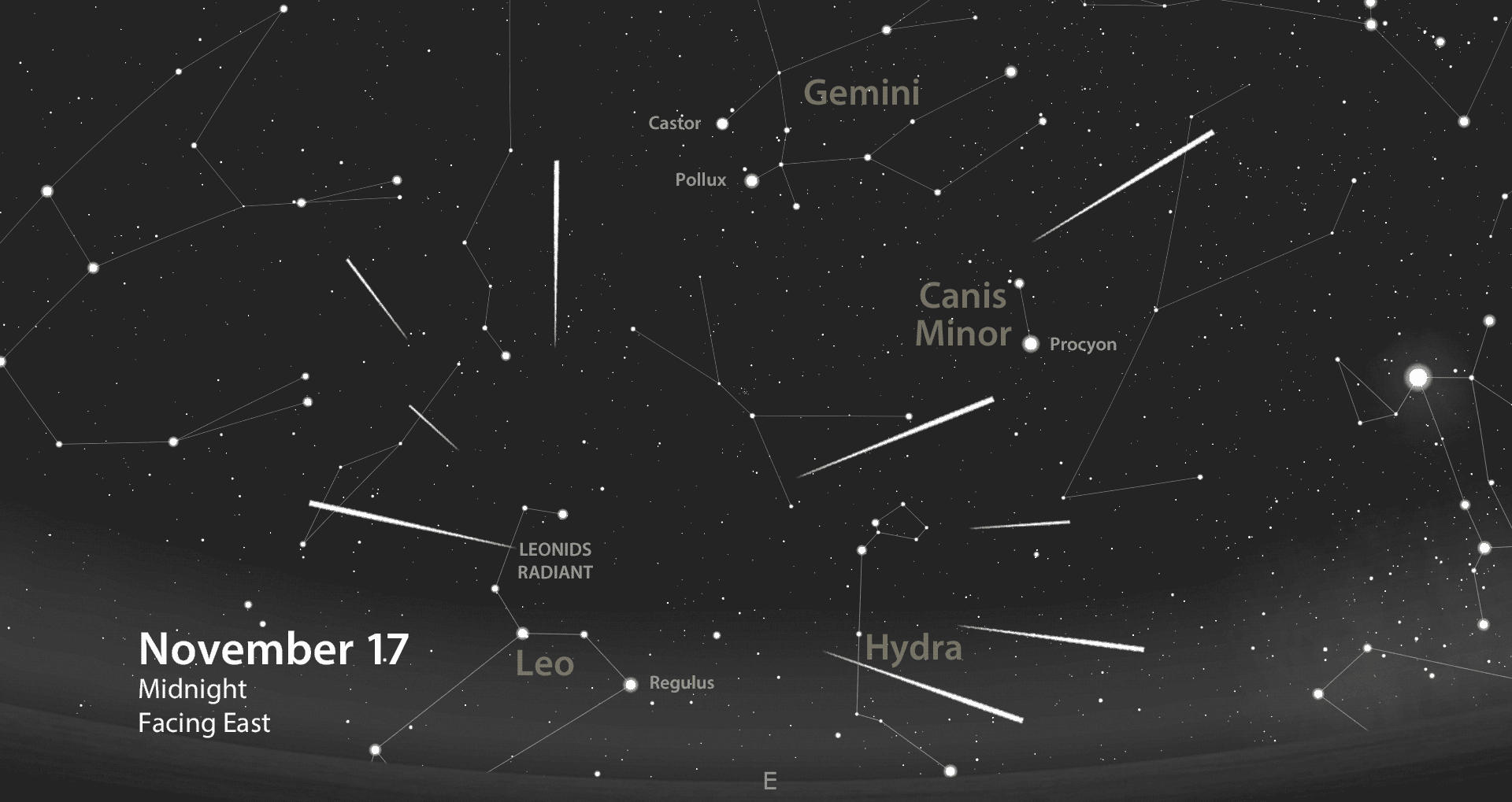
Two Meteor Showers & Another Penumbral Lunar Eclipse
November 2020 :
Note: This article may contain outdated information
This article was published in the November 2020 issue of The Skyscraper and likely contains some information that was pertinent only for that month. It is being provided here for historical reference only.
I love the cool nights of November. The hazy skies of this past summer’s four heat waves are long gone, and amateur astronomers can begin their evening observing sessions after dinnertime, courtesy of earlier sunsets.
But just as we are gradually growing accustomed to shorter daylight hours in the northern hemisphere as we approach the Winter Solstice on December 21, most of the United States will transition back to Eastern Standard Time (EST) from Eastern Daylight Time (EDT). This year that switch occurs at 2:00 a.m. on Sunday, November 1. Nothing in the heavens change. We are simply setting our clocks back one hour (we had set them ahead one hour back on March 8). “Spring ahead and fall back” is the mantra created to help us remember when this practice is put into effect. This bi-annual ritual takes a few days in which to get adjusted. At least we can look forward to an extra hour of sleep. Don’t forget to reset all your devices with clocks (older units don’t automatically accomplish this task) else you will be an hour early for any Sunday morning event.
Our first meteor shower of the month occurs on the night of November 4-5 with the Earth traversing a stream of particles comprising the Taurid meteor shower. These often very bright yellow fireballs (meteors that explode and fragment into multiple pieces) are fairly slow and enter our atmosphere at approximately 17-miles per second. Expect no more than about a dozen meteors at peak activity. Observe after midnight to increase your chances of seeing one. Look in the general direction of the constellation Taurus. To locate Taurus find the V-shaped pattern, called the Hyades, that defines the bull’s face, or locate the Pleiades — the Seven Sisters star cluster. Unfortunately, a bright waning gibbous Moon (Last Quarter on the 8th) will overshadow many of the Taurids this year since it will reside nearby in the foot region of Castor, one of the Gemini twins to the east (left) of Taurus.

The second shooting star display of note occurs on the night of November 16-17 with no lunar interference. A waxing crescent Moon sets just after sunset on the 16th. This is the peak night of the annual Leonid meteor shower. Between midnight and dawn an observer well away from light pollution sources may see about 10-15 green or blue shooting stars per hour.
The Leonids blaze across the sky at around 44-miles per second as they hit the Earth’s atmosphere nearly head-on. The resulting display produces many fireballs, with about half of them leaving trains of dust that can persist for minutes. The area of sky from where the meteors appear to radiate is in the Sickle (backwards question mark) asterism of Leo. Providing the skies are clear, the Leonids seldom fail to disappoint a determined stargazer.
During the early morning hours of November 30, we will experience yet another penumbral lunar eclipse. Back on the night of July 4-5 a very shallow eclipse occurred when the Full Moon passed between the Sun and the Earth and slid (from west to east/right to left) into the Earth’s light shadow called the penumbra. Only about one-third of the top portion of the lunar surface was within the penumbral shadow. Even I could not detect the shadow’s presence.
The upcoming penumbral eclipse may be slightly more detectable since at maximum eclipse the top two-thirds of the lunar surface will be affected. This will position the top portion of the Moon closer to the Earth’s dark umbral shadow. The lunar surface should look somewhat subdued in this area. Compare it to the bottom portion of the Moon’s disk not within the shadow. See this web site for a great animation of the event: https://www.timeanddate.com/eclipse/lunar/2020-november-30
The unfortunate circumstance is the timing of this eclipse. It occurs when most of us are in dreamland. See the times of the major elements in the accompanying table. All times are EST (Eastern Standard Time).
| Penumbral Eclipse begins | 2:32:22 am |
| Maximum Eclipse | 4:42:53 am |
| Penumbral Eclipse ends | 6:53:26 am |
When the maximum eclipse occurs at 4:42:53 a.m. the Moon will be positioned due west and about 33 degrees above the horizon. It will be located just to the right of the V-shaped Hyades star cluster. The orange star, Aldebaran, denotes one of the bull’s eyes. The V will point towards the horizon. We will have a better chance of detecting the penumbral shadow at that time. Total duration of this eclipse is four hours, twenty-one minutes and four seconds.
Throughout the month continue to keep an eye on Jupiter and Saturn as they move closer to the western horizon each night and also closer to one another from our vantage point in space. On December 21 Jupiter and Saturn will be so close that they will appear as one object to the naked-eye just after sunset 15 degrees above the western horizon. This “Great Conjunction” will be the closest these two worlds have been since 1623, and it will be a spectacular event to behold. Details will be provided in my December column.
Mars will also continue to beckon one to focus a telescope on its pumpkin-colored disk. Although the Earth is now moving away from our neighbor after our recent close encounter, a decent amount of surface features will still be detectable even through small telescopes. Keep your eye on the planet’s ever-shrinking South Polar Cap.
Keep your eyes to the skies.



